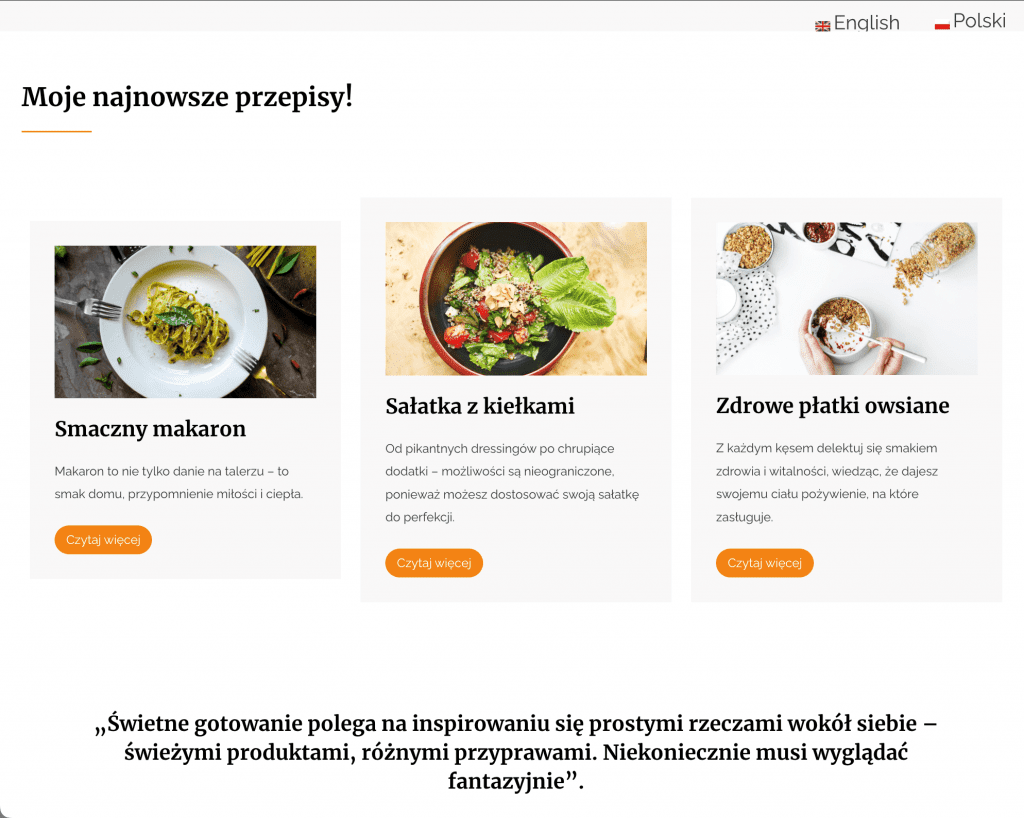Liraz Postan
Liraz is an International SEO and Content Expert with over 13 years of experience.

Optimizing your website for SEO is a powerful way to reach new audiences, but when you add localization into the mix, the potential to connect with a global audience multiplies. Whether you’re expanding into a single new market or reaching out to customers in dozens of countries, multilingual SEO is the key to making sure your content resonates and ranks well across the board.
Multilingual SEO not only helps make your site content more engaging for diverse audiences, but it also ensures you maintain high search rankings and achieve the conversions needed to make your international expansion a success. With the right strategies in place, navigating the complexities of multilingual SEO becomes an exciting opportunity rather than a challenge.
Ready to reach a global audience and climb to the top of search engine results in multiple languages? Our guide has everything you need to optimize your content for a successful multilingual SEO strategy as a part of your SEO localization.
When optimizing content for multilingual SEO, several strategies are essential to ensure your website performs well across different languages and regions. These strategies not only help your site rank higher in search engine results pages (SERPs) but also make your content more relevant and engaging for diverse audiences. Here’s a closer look at some of the most important tactics to consider.
To achieve success with multilingual SEO, creating compelling and culturally relevant content is essential. While translation is a starting point, it’s not enough to simply convert existing content word for word. Instead, focus on localization—adapting your content to resonate with the specific needs and preferences of your target audience.
Using native speakers as translators and editors is crucial to producing high-quality content that meets the expectations of a new audience. These experts can fine-tune your content to reflect cultural norms, idiomatic expressions, and even legal requirements unique to each market. This ensures that your message is not only understood but also appreciated by your target audience.
Moreover, including local information can significantly enhance the relevance and appeal of your content. Whether it’s referencing local events, customs, or geographical details, the more your content feels native to the audience, the better it will be received. Quality content that’s properly localized not only improves user engagement but also boosts your chances of higher rankings in local search results.
Effective keyword research is the foundation of any SEO strategy, and this becomes even more crucial when dealing with multiple languages. It’s not just about translating your existing keywords into other languages; it’s about understanding the search behavior and intent in each target market. This means identifying region-specific keywords and phrases that resonate with local audiences.
For example, a keyword that works well in English may not have a direct translation in another language, or it might have different levels of competition and search volume. On the same note, countries that share the same language may have completely different terms for the same thing. Tools like Google Keyword Planner and Ahrefs can help you find the most relevant keywords for each language, ensuring that your content is optimized for local search trends.

Meta tags, including title tags and meta descriptions, are often the first interaction users have with your site in search results. Meta tags also provide search engine crawlers with essential information about your content, making it easier for them to display reliable results for users. That’s why it’s essential to optimize your meta tags to improve your rankings, boost click-through rates, and reach your target audience.
Start small by adapting your meta titles and descriptions. To give your imagery the best chance of performing well in local search, you’ll also want to optimize alt text. Translations need to be high quality, with all elements containing competitive keywords specific to every language you’re looking to target. It’s also crucial that local characters and formatting are observed. This will help avoid potential issues with coding.
Hreflang tags are a technical element that signals to search engines which version of your content is intended for which audience. By implementing hreflang tags correctly, you help search engines deliver the right language version of your content to users based on their location and language preferences. This not only improves user experience but also prevents issues like duplicate content, which can negatively impact your SEO.
For instance, if you have a page in both French and English, the hreflang tag will tell Google which version to show to a user in Canada versus a user in France. Implementing hreflang tags is crucial for ensuring that your multilingual content is properly indexed and served to the correct audience. Use hreflang testing tools to ensure tags have been applied and are performing correctly.
When optimizing your website for new languages, website structure matters too. As well as improving user experience, the structure can help bolster your SEO efforts, allowing for easier indexing by search engines.
To improve the multilingual credentials of your website, start by including separate URLs for every language you plan on using. While you can use language detection and page redirection, these tools can cause a headache when it comes to indexing.
You’ll also need to consider site navigation. Maintaining a similar structure across all versions of your website makes the user experience more consistent, which is essential if users need to switch between languages.
As of 2024, Google is the most popular search engine on the planet, enjoying a market share of almost 83.5%. However, it’s not the default search engine in every region. For example, Baidu is the search engine of choice in China, while in South Korea, Naver is the most popular search engine over Google.
Chances are, you’ll need to modify your SEO strategies for local algorithms depending on the primary search engine. Furthermore, registering your website with local search engines and directories will help boost your authority and increase your visibility. Finally, invest resources into creating localized backlinks. The more backlinks you receive from local websites, the higher your domain authority will be. This has a positive impact on local search engine rankings.
Optimizing content for multilingual SEO requires not only strategy but also the right set of tools to manage and streamline your efforts. Here’s an overview of some essential tools and software that can support your multilingual SEO initiatives, along with tips on how to select the best options for your specific needs.
Features and Benefits:
Google Keyword Planner is a powerful tool for conducting keyword research across multiple languages and regions. It allows you to identify popular search terms in different markets, giving you insights into what potential customers are looking for in various languages.
How to Use It:
Use Google Keyword Planner to compare search volumes for keywords in different languages, helping you choose the most effective terms to target. This tool is particularly useful for understanding local search behaviors and adapting your content strategy accordingly.
Features and Benefits:
Ahrefs offers comprehensive SEO analysis, including keyword research, backlink analysis, and competitor research, all of which are crucial for multilingual SEO. It provides data on search volumes and keyword difficulty across different languages, making it easier to optimize your content for international audiences.
How to Use It:
Leverage Ahrefs to analyze your competitors’ multilingual strategies and identify opportunities to improve your own content. The tool’s ability to track keyword rankings in different languages and regions makes it an invaluable resource for monitoring your multilingual SEO performance.
Features and Benefits:
SEMrush is an all-in-one SEO tool that offers features specifically designed for international and multilingual SEO, such as international position tracking and global keyword research. It also provides insights into local SEO performance and helps identify content gaps across different languages.
How to Use It:
Use SEMrush to manage your multilingual SEO campaigns, track your rankings across different regions, and optimize your content based on localized search trends. Its robust analytics capabilities make it easier to refine your strategy and achieve better results.
Features and Benefits:
WPML is a comprehensive plugin for WordPress that enables you to create and manage multilingual websites with ease. It supports over 40 languages and allows for the translation of everything from posts and pages to themes and plugins. WPML also integrates with BLEND’s localization platform, allowing you to work with the BLEND translators you know and trust without manually exporting and importing content to and from your site. Additionally, WPML integrates with popular SEO plugins like Yoast SEO, ensuring your multilingual content is optimized for search engines.
How to Use It:
Install WPML on your WordPress site to begin translating your content into multiple languages. The plugin provides a straightforward interface for managing translations and can be paired with professional translation services to ensure quality. WPML also handles the technical aspects of multilingual SEO, such as hreflang tags, which help search engines understand which language version of your content to show to users in different regions.
Original Language Content on the Front-End After Running WPML Export and Import

Connected Translations on the Front-End After Running WPML Export and Import

Features and Benefits:
Yoast SEO Multilingual is a plugin designed specifically for WordPress users who need to manage multilingual SEO. It integrates with WPML to help optimize your website for different languages, including managing hreflang tags and localized meta tags.
How to Use It:
Install Yoast SEO Multilingual on your WordPress site to easily manage and optimize multilingual content. The plugin simplifies the process of creating SEO-friendly content in multiple languages, ensuring your site remains visible and competitive in international markets.
When selecting tools for your multilingual SEO efforts, consider the specific needs of your business and the markets you’re targeting. Look for tools that offer comprehensive support for the languages and regions you’re focusing on, and prioritize those that provide clear data and actionable insights. Additionally, integrating these tools, such as the Shopify translation apps with your existing SEO workflow can help you maintain consistency and efficiency as you expand your global reach.
Implementing multilingual SEO can be complex, but understanding and addressing common challenges can help streamline the process. Below, we discuss key issues businesses often face and offer practical solutions to overcome them.
Navigating the intricacies of different languages and cultures is crucial for effective localization. Misunderstanding local language specifics or cultural norms can lead to embarrassing mistakes or even legal issues. To avoid these pitfalls, involve native speakers at every stage of your localization journey, including market research, quality assurance, and testing. Their expertise will ensure your content resonates with local audiences and adheres to cultural and legal standards.
Directly translating content from one language to another can lead to duplication issues, which search engines may penalize. Instead of relying on direct translations, create unique, high-value content tailored for each language and market. When content duplication is unavoidable, use hreflang tags to indicate to search engines that your pages are localized versions of the same content, rather than duplicates. This helps maintain your SEO rankings and ensures your content is recognized as relevant and valuable in each target market.
Securing quality backlinks is a cornerstone of effective SEO, but it becomes more challenging in a multilingual context. Without native speakers, identifying and reaching out to the right websites, online retailers, and blogs can be difficult. To overcome this, build a team of native speakers who can facilitate outreach and secure high-quality backlinks. Additionally, focus on creating content-rich pages optimized for local audiences to attract and retain authoritative backlinks.
By understanding these common challenges and implementing targeted strategies, you can enhance your multilingual SEO efforts and ensure your content reaches and engages global audiences effectively.
Are your revenue streams stagnating in a saturated market? It’s time to start thinking about international expansion. Whether you’re a small business owner looking to secure new customers from further afield or a larger enterprise with an eye on globalization who needs multilingual customer support chats and more, you’ll need to think seriously about multilingual SEO.
Even if you’ve mastered SEO in your native language, you can’t simply lift an SEO strategy from one language into another and hope for the best. Instead, you’ll need to tailor a brand-new one to increase your rankings and keep the competition at bay.
If you want to make a big impact with multilingual SEO, it’s a good idea to keep a few key strategies in mind. Firstly, remember that content is king. The richer your content is, the more it will resonate with local audiences. Keyword research is another foundation block for a successful SEO campaign. When it comes to multilingual ones, you’ll need to approach keyword research independently for every language you plan on targeting.
Additionally, you’ll need to apply hreflang tags to avoid any issues with duplicate content. When it comes to website design, you’ll also need to think beyond user experience. As well as adapting and designing sites for accessibility, make sure they’re also multilingual-friendly. Finally, think more generally about search engine optimization. In many Western countries, Google reigns supreme, but this isn’t the case elsewhere in the world. Identify which search engines people are using in a target market and adapt content accordingly.
At BLEND, we can help you with all your localization needs, offering unrivaled insights into optimizing content for multilingual SEO. Whether you’re looking to learn more about multilingual SEO or discuss BLEND’s complete catalog of localization services, our team will be happy to help. Click here to get in touch with our team.
What our customers are saying